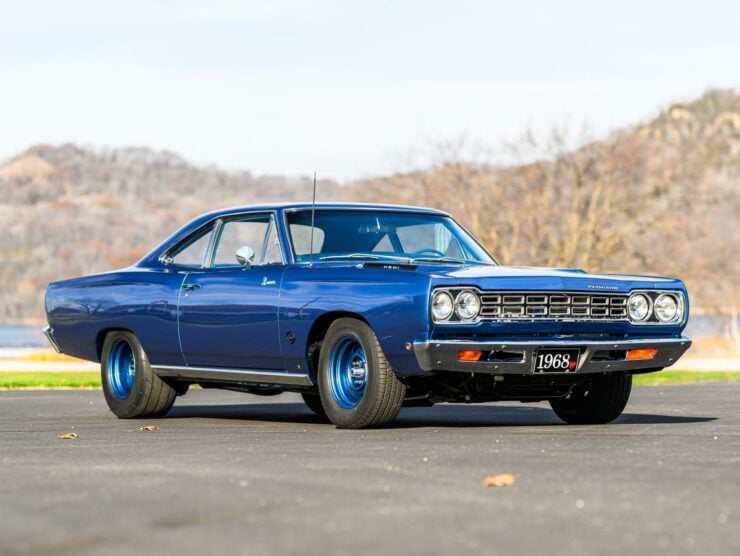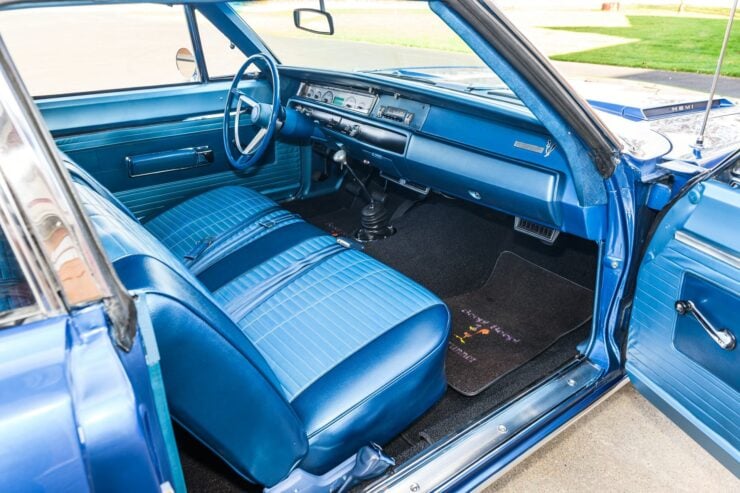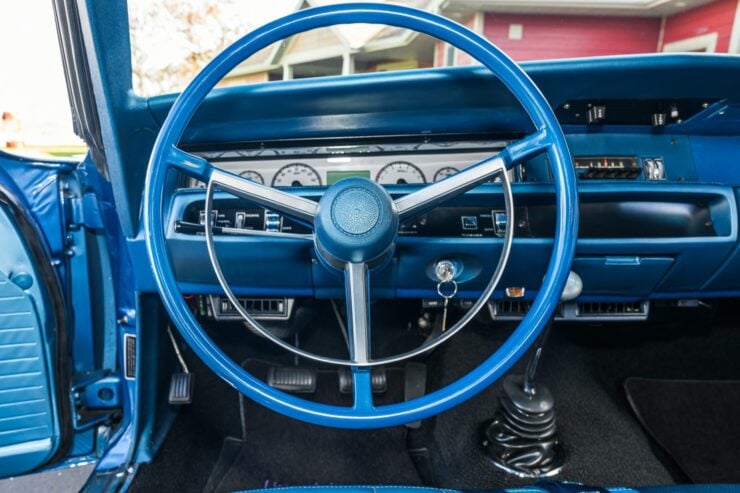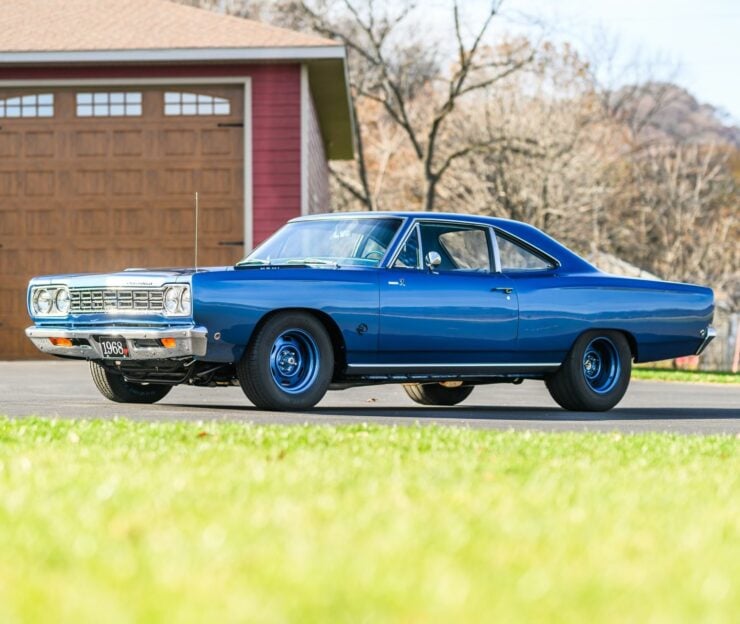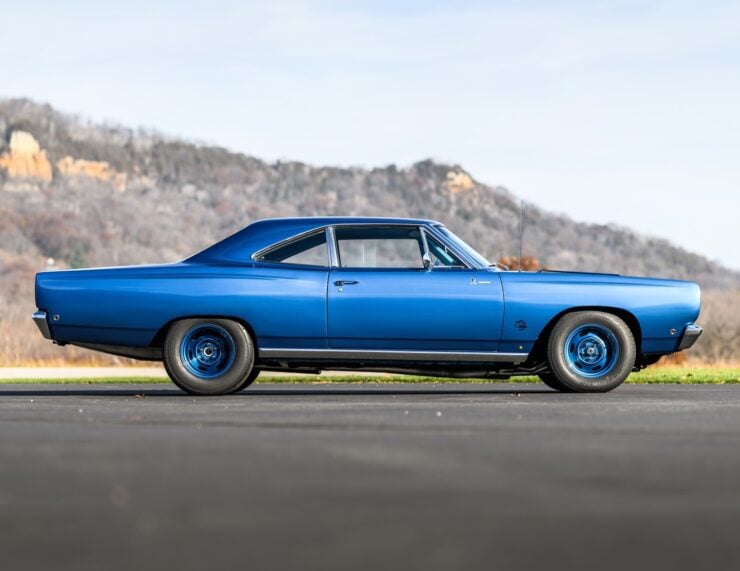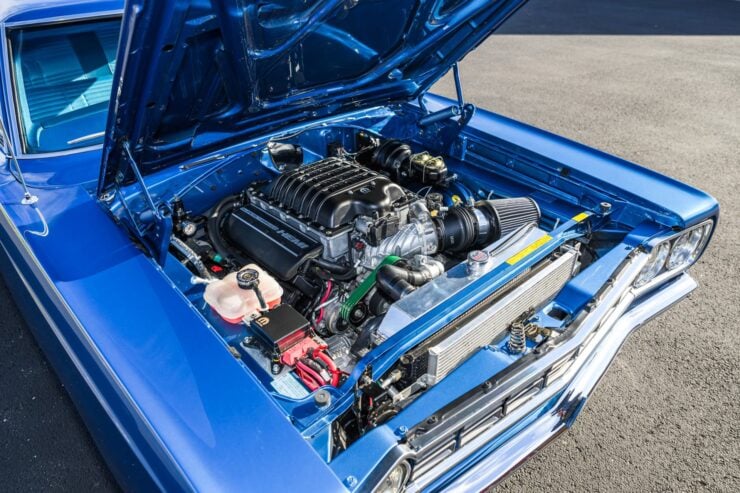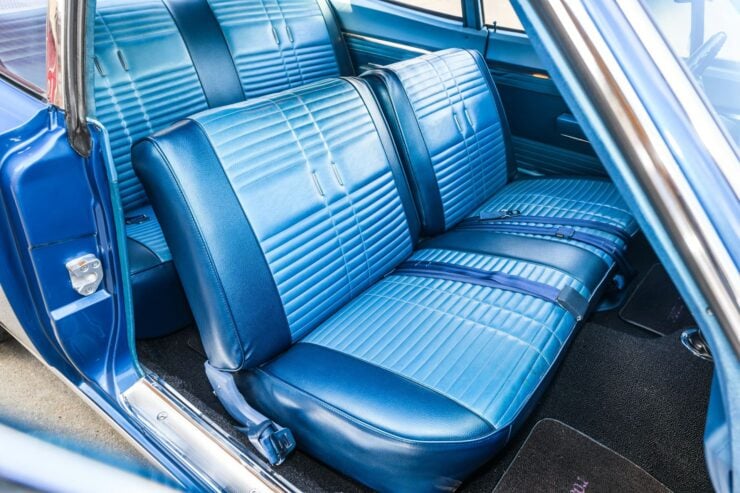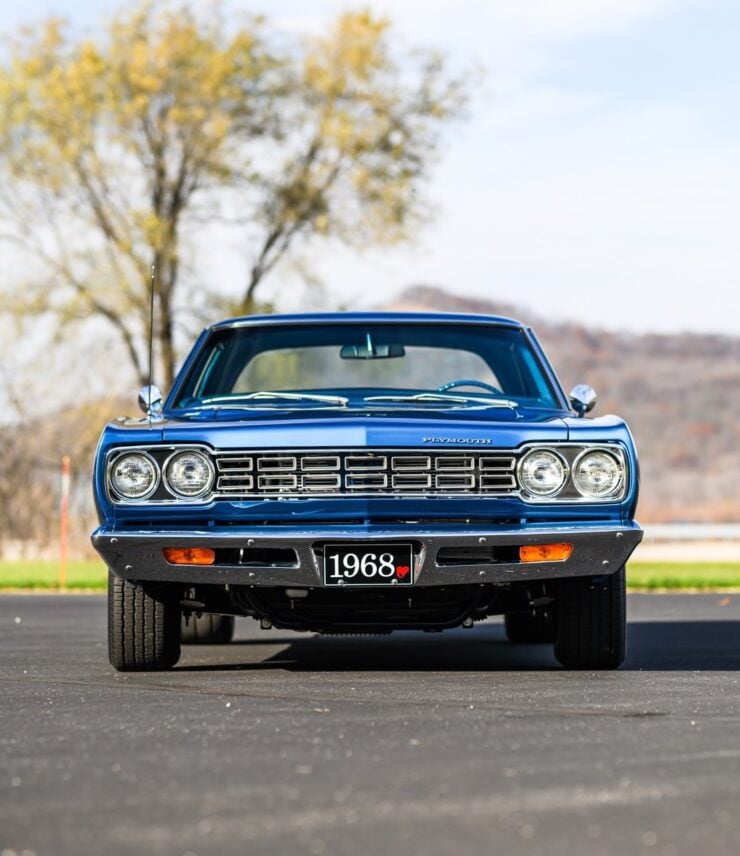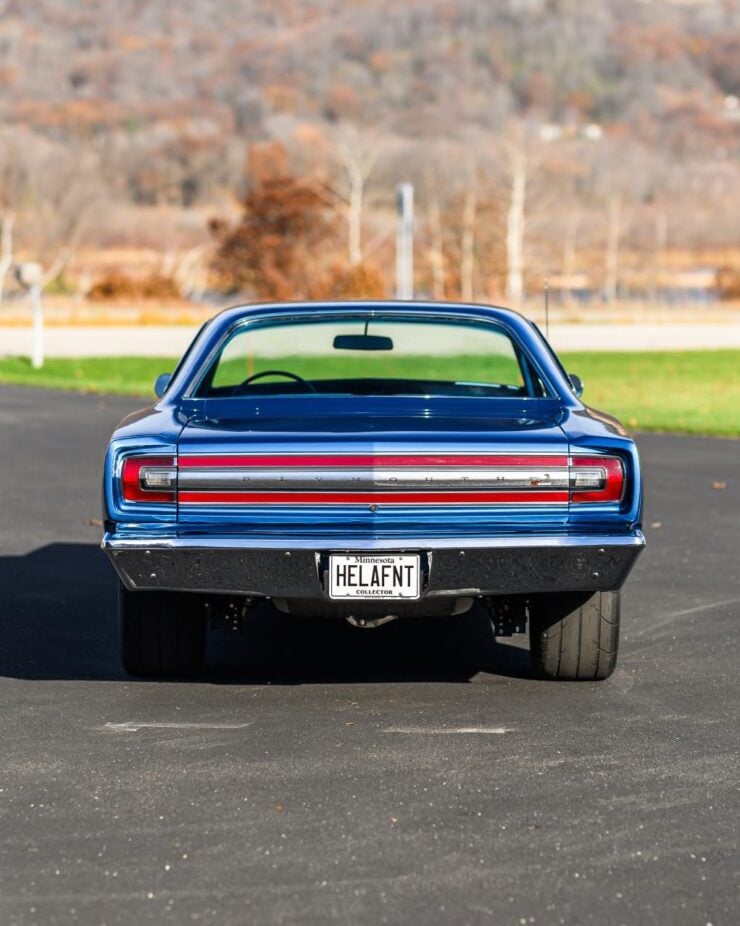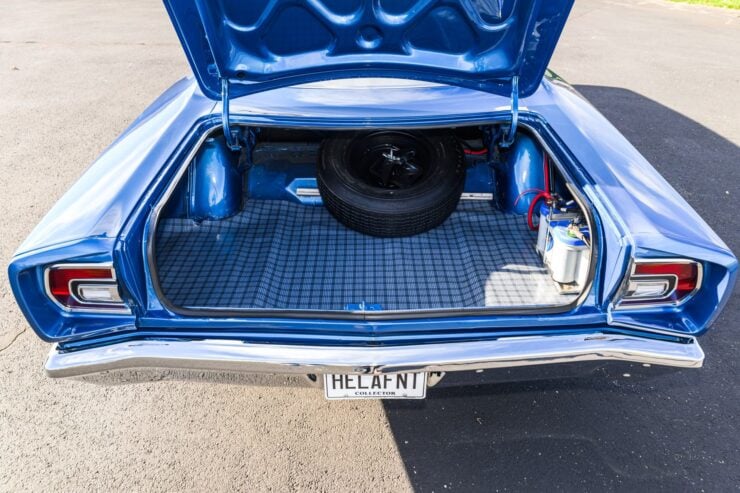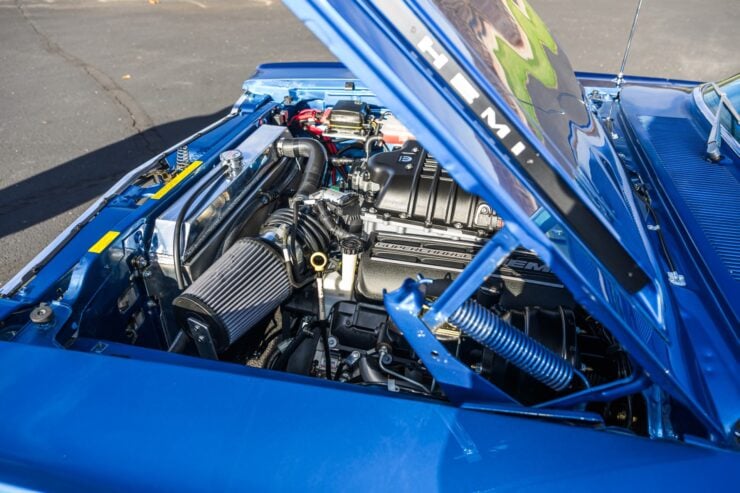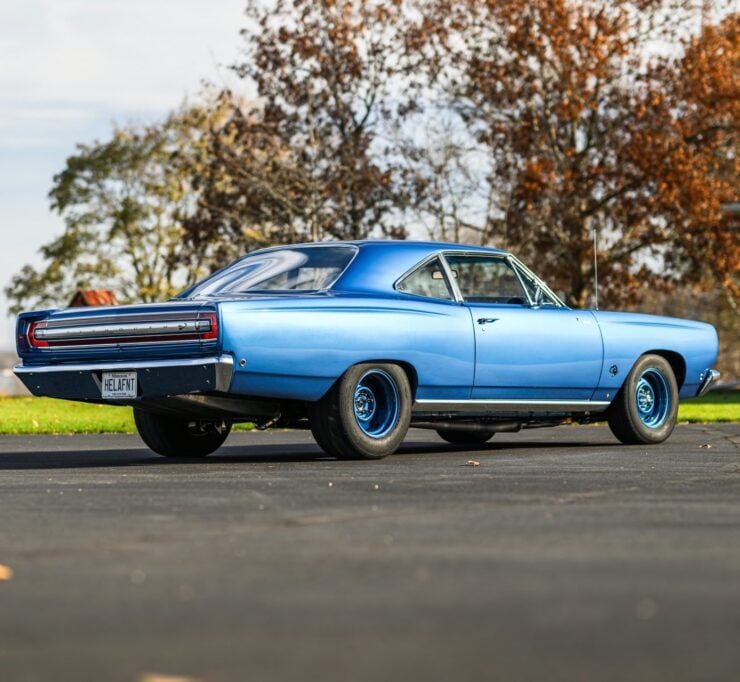This 1968 Plymouth Road Runner has been completely rebuilt into a car far quicker than the one that originally left the factory. It’s now powered by a 1,000 bhp Hellephant V8 producing 950 lb ft of torque, all sent back through a Strange Engineering Dana 60 rear end.
The most powerful engine offered in the 1968 Road Runner was the 425 bhp 426 cubic inch (7.0 liter) Hemi V8, the Hellephant-powered example here is well over twice as powerful, and it benefits from a slew of chassis, suspension, and brake upgrades to better handle the output.
Fast Facts – A Hellephant-Powered Plymouth Road Runner
- The Hellephant crate engine, introduced by Mopar in 2018, is a modern homage to the classic muscle car era. It’s a supercharged 7.0 liter (426 cubic inch) Hemi V8, named as a portmanteau of “Hellcat” and the iconic 1960s “Elephant” 426 Hemi engine.
- The engine produces 1,000 bhp and 950 lb ft of torque, making it one of the most powerful crate engines ever offered by an OEM. It’s a combination of classic muscle car power with contemporary engineering and technology, making it ideal for modern restomods and custom car projects.
- The Plymouth Road Runner debuted in 1968 as a new, more affordable muscle car with bare bones fittings and a strict focus on performance-per-dollar.
- Plymouth had initially projected sales of 20,000 units for 1968. The model became a best seller with over 45,000 sold in the first year.
“Beep Beep” – The Plymouth Road Runner
Back in the late 1960s Plymouth was involved in negotiations with Warner Bros.-Seven Arts (rebranded in 1969 to Warner Bros. Inc.) to use the iconic cartoon characters “Road Runner” and “Wile E. Coyote” on a new line of affordable, mid-sized performance cars.
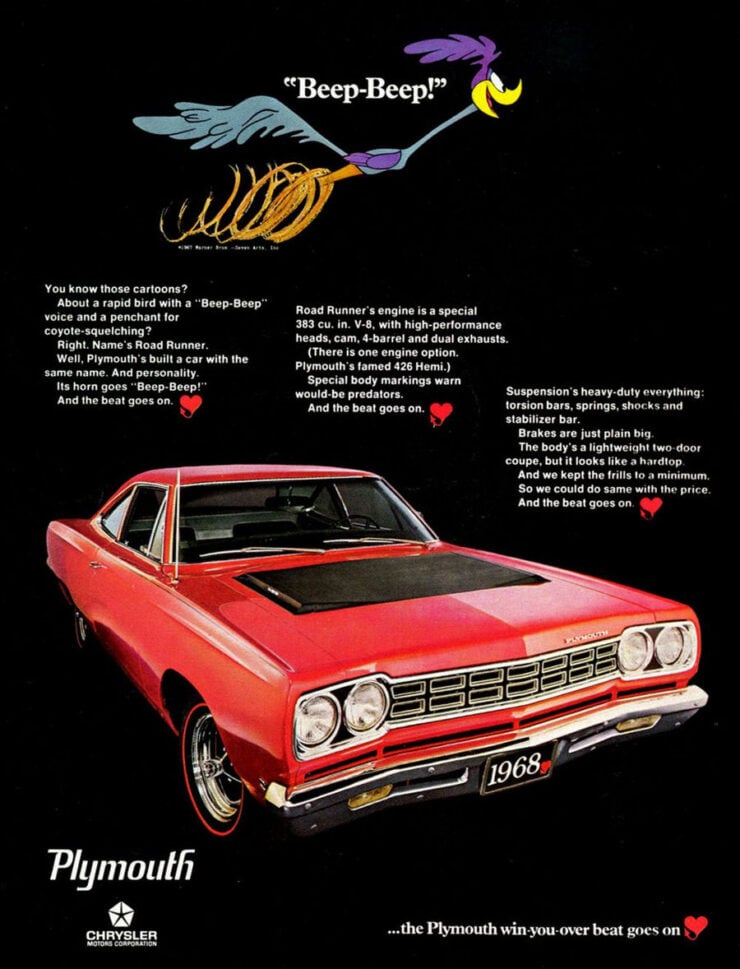

By the time negotiations were completed the two companies signed off on a deal that would give Plymouth the exclusive rights to use the two characters’ names and likenesses, including a car horn with the distinctive “beep beep” of the Road Runner.
It may sound simple, but that horn cost Plymouth $10,000 USD to develop in 1967, the equivalent to $91,931 USD in the year 2023.
The Arrival Of The Road Runner
When muscle cars first exploded onto the American car scene, in either the 1950s or 1960s depending on who you listen to, they were typically mid-sized cars with oversized engines and somewhat affordable sticker prices for the average person.
As the 1960s progressed this began to change, muscle cars became more luxurious, more complex, and as a result, more expensive. Plymouth executives saw this change happening and decided that a simpler, more affordable muscle car would appeal to many – it was this impetus that kickstarted the development of the Plymouth Road Runner.
The Road Runner was designed from the outset to be fast, there would only be two engine options offered at the time of its release in 1968 – the “Roadrunner” 383 cubic inch (6.3 liter) B-series V8 with a 4-barrel Carter carburetor, or the 426 cubic inch (7.0 liter) Hemi V8 with 2X4 Carter AFB carburetors.
The 383 was good for 335 bhp and 425 lb ft of torque, the 426 Hemi bested it with 425 bhp and 490 lb ft of torque – making it one of the most powerful mass-produced cars on earth at the time of its release. The standard transmission was a 4-speed manual with a floor shifter, which most seemed to opt for, though there was also an optional TorqueFlite 3-speed automatic transmission for an extra cost.
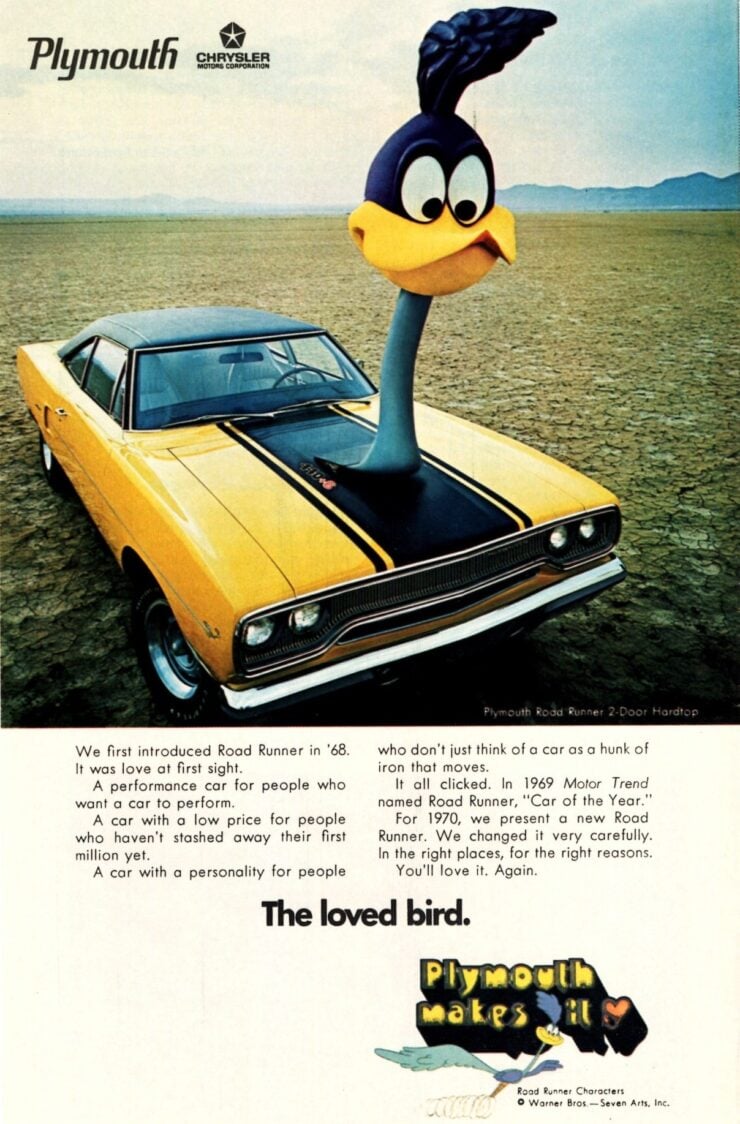

As was standard at the time, the Road Runner was fitted with independent front suspension and a live axle rear arrangement, with drum brakes all around unless you specifically ticked the option box for front discs.
In order to keep costs as low as possible the early Road Runners came with very little in the way of comfort or luxury, they had a simple vinyl bench seat up front and rubber floor mats instead of carpeting. The options list was similarly sparse, though buyers could opt for power steering, an AM radio, or air conditioning.
Initial sales projections for the Road Runner in its first year of production were modest. It was felt that the company could sell as many as 20,000 of them thanks to the low price, high performance, and the coast-to-coast advertising and publicity campaign designed to introduce the American public to the new model.
By the end of the first year the sales of the Road Runner had topped 45,000 units, over double the initial projection. The new model was a sales hit, and over the course of its 1968 to 1980 production run it became one of the most beloved American muscle cars of its age.
The Hellephant V8-Powered Road Runner Shown Here
The Hellephant crate engine was unveiled in 2018 as a nod to the classic muscle car era. It’s a supercharged 7.0 liter Hemi V8, combining the names “Hellcat” and the 1960s “Elephant” 426 Hemi. The engine produces 1,000 bhp and 950 lb ft of torque, it’s one of the most powerful OEM crate engines ever offered for public sale, and just 100 were made.
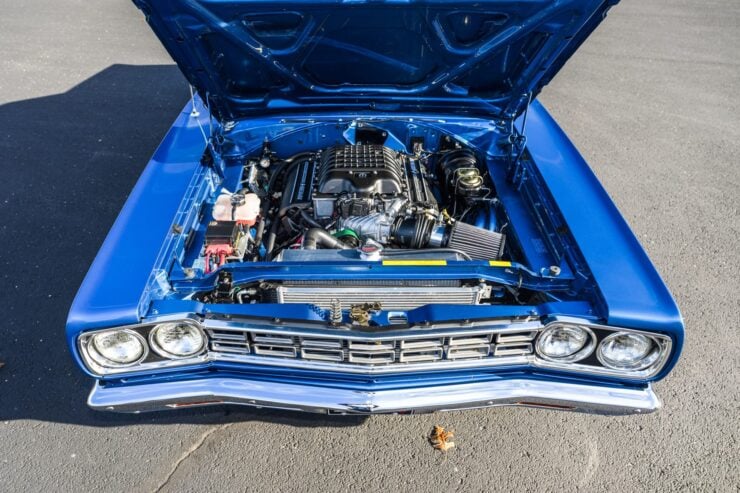

The 1968 Road Runner you see in this article originally came from the factory with the 383 V8 and after a recent restoration it scored 990 out of 1000 at MCACN. It was then decided to undertake a new project to create one of the most powerful road-legal Road Runners ever made.
The original engine, transmission, and rear end were all removed, along with the stock brakes and suspension.
The rebuild process began with the fitment of a Gerst tubular K-frame front end with power rack and pinion steering. A Strange Engineering Dana 60 rear end with 3.54 ratio gears was then installed, with a Street-Lynx triangulated 4-link kit.
Viking Performance double adjustable coilover shock absorbers were then added front and back, along with Wilwood power disc brakes.
The installation of the Hellephant crate engine was completed in April of 2021, it was mated to a 4L80E racing transmission with TCI controller, sending power back to that Dana 60 rear.
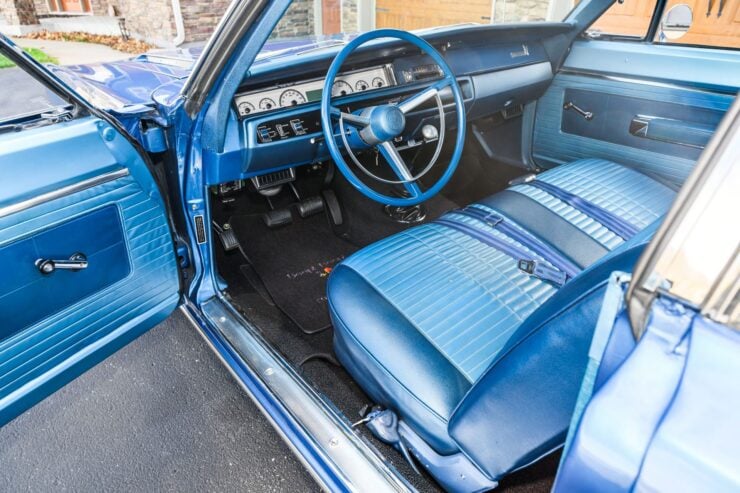

Externally the car has been kept close to stock in appearance, with a blue body and blue color-matched, staggered width steel wheels. An argument could be made that it’s a sleeper, as no one would guess at a glance that it’s turning out more power than a Bugatti Veyron.
There are subtle Hellephant decals on either side of the front fenders, but otherwise it would be impossible to know just how much power this car is putting down.
It’s now due to roll across the auction block with Mecum in early January. At the time of writing there is no price guide attached, if you’d like to read more about it or register to bid you can visit the listing here.
Images courtesy of Mecum
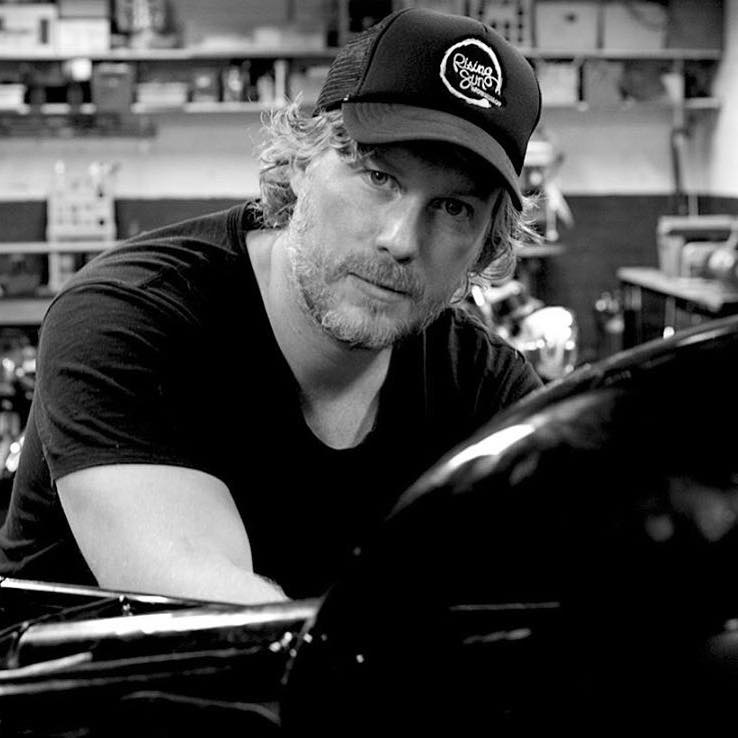
Articles that Ben has written have been covered on CNN, Popular Mechanics, Smithsonian Magazine, Road & Track Magazine, the official Pinterest blog, the official eBay Motors blog, BuzzFeed, Autoweek Magazine, Wired Magazine, Autoblog, Gear Patrol, Jalopnik, The Verge, and many more.
Silodrome was founded by Ben back in 2010, in the years since the site has grown to become a world leader in the alternative and vintage motoring sector, with well over a million monthly readers from around the world and many hundreds of thousands of followers on social media.
This article was originally published by a silodrome.com . Read the Original article here. .


